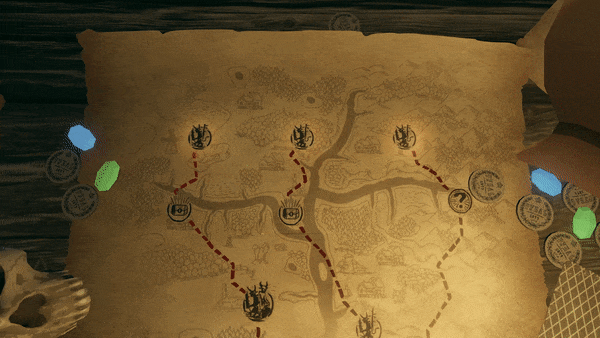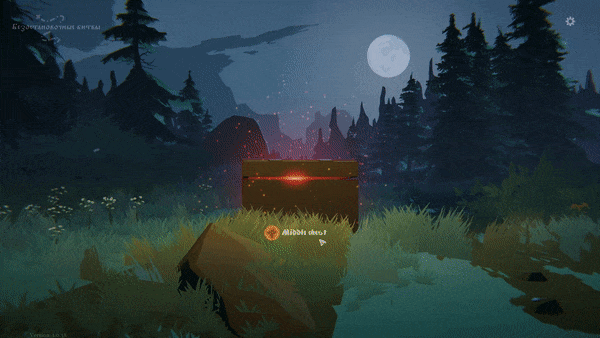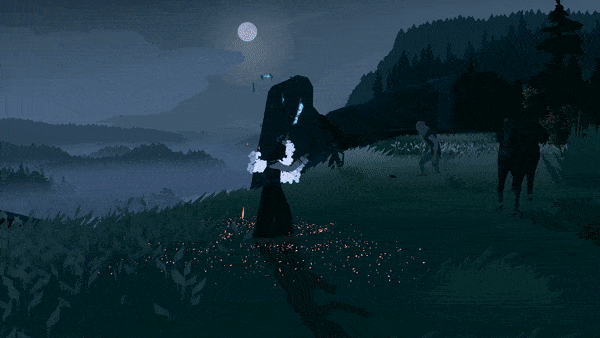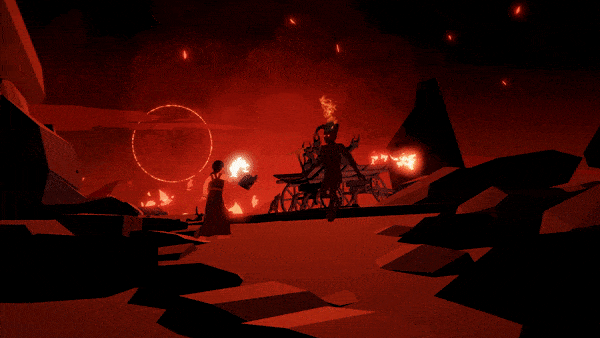1899 then. Why she depicted liek that?
Vasilisa the Beautiful
Once upon a time in some kingdom there lived a merchant. He had been married for twelve years and had only one child, a little girl called Vasilisa the Beautiful. When Vasilisa was eight years old, her mother died. Before her death, the merchant’s wife called Vasilisa to her side, took out a doll from the blanket, gave it to the girl and said: “Listen to me Vasilisa! Remember my last words and do as I tell you. I’m dying.
Take this doll together with my blessing. Keep the doll always with you wherever you go and never show it to anybody. If anything bad happens to you, just give the doll something to eat and ask her advice. The woman gave her daughter a last kiss and died.
After his wife’s death the merchant sorrowed for a time, and then decided to marry again. He was a good, handsome man and many young girls would be glad to marry him.
The merchant chose a widow whom he liked most of all. This widow had two daughters of her own who were almost the same age as Vasilisa. The merchant thought she would be a good housekeeper and mother, but he was wrong; he gave his daughter a cruel stepmother.
Vasilisa was the most beautiful girl in the village and her stepmother and her stepsisters were very envious of her. They tormented the girl with hard work and hoped that Vasilisa would grow thin and her face would turn dark and ugly in the wind and sun. The girl was able to finish all her work and yet became more and more beautiful every day. As for the stepmother and her daughters, they grew thinner and uglier every day. They sat around like ladies, did nothing the whole day long but harbor ill-will towards Vasilisa.
Vasilisa managed to do all her hard work with the help of her magic doll. The girl gave her doll some delicious morsel and asked it for its advice and help. Having finished eating the doll calmed Vasilisa that everything will go well and all the work would get finished. The girl just sat in the shade or picked flowers while her doll weeded the beds, watered the cabbages, brought water, lit the stove and even gave the girl herbs against sunburn.
The years passed. Vasilisa grew up. Many young men wanted to marry her while nobody even wanted to look at her stepsisters. The stepmother began to hate Vasilisa so much that she decided to kill the girl.
One time the merchant went to the fair and wasn’t expected back for some time. The stepmother decided to move to another house on the edge of the thick forest. In this forest lived the malicious witch Baba-Yaga who ate people just like chicken. Every day the stepmother sent Vasilisa into the forest, but the girl always returned safe and sound with the help of her magic doll who showed her the right way to follow.
One autumn evening the stepmother gave her daughters different tasks to do. She told Vasilisa to spin, one of her daughters had to make lace and the other one had to knit stockings. Then she blew out all candles in the house except for a single one that burnt in the room where the girls were working and went to bed. Some time passed and the candle began to sputter. One of the stepmother’s daughters came to the candle and blew out it, pretending that she was trying to adjust the wick.
“What shall we do?” said the stepmother. “It is impossible to finish our work in the darkness. Somebody should go to Baba-Yaga and ask her for a light.”
“I’m not going,” said the first stepdaughter who was making lace. “I can see my needle.”
“I’m not going,” said the second stepdaughter who was knitting stockings. “I can see my knitting needles very well.”
With these words they shoved Vasilisa out of the house. The girl found herself in the dense forest late at night. Being very frightened she burst into tears. Then she fed her magic doll and asked for its advice. “Don’t be afraid, Vasilisa. You will be all right. Nothing bad can happen to you while I am with you. Go to Baba-Yaga and ask her to give you a light.”
Vasilisa walked through the dense forest holding the doll close and suddenly she saw a horseman rushing by. His face was white, he was dressed in white, and he was riding a white horse with white reins and stirrups. After that, the first light of dawn shown across the sky.
The girl walked deeper in to the forest and unexpectedly, another horseman came by. His face was red, he was dressed in red clothes, and he was riding a red horse with red reins and stirrups. Vasilisa was very surprised; she had never seen such strange men.
Vasilisa continued her journey. She walked all day and at last she came to Baba-Yaga’s hut. The fence around the hut was made up of human bones and crowned with human skulls. The gate was no gate but the bones of men’s arms, the lock was no lock, but a set of sharp teeth. The girl was terribly frightened. Suddenly she saw another horseman who galloped by. His face was black, he was dressed in black clothes and he was riding a black horse. He rode through the gates and disappeared. After that night descended and the eyes of the skulls crowning the fence began to glow, and it became as clear as if it were day. Vasilisa trembled with fear. She wanted to run away but she couldn’t even move. Soon the girl heard a horrible noise. The trees creaked, the dead leaves crunched and the earth trembled. There was Baba-Yaga riding in a mortar. She flew up to the gate, sniffed the air and cried: “I smell human beings! Who is here?”
Vasilisa came up to Baba-Yaga trembling with fear and said: “I am, Vasilisa. My stepmother sent me to you to ask for a light.”
“I know your stepmother and her daughters. Stay with me for a while and work. If you work well, than I will give you a light. But if you don’t, I will eat you, eat you right up!” The she addressed the gates: “Slide back, bolts! Open up, gates! I want to come in.”
The gates opened and Baba-Yaga rode in and Vasilisa walked behind her. After that the gates closed by themselves. They went into the hut. Baba-Yaga stretched herself out on the bench and said roughly: “Vasilisa, bring me whatever’s in the stove! I am hungry!”
The girl began to carry different food. There was enough of it to feed ten men. Then she went down to the cellar and brought kvas, mead, beer and wine. Baba-Yaga ate and drank everything. All she left Vasilisa was cabbage soup, a crust of bread, and a scrap of pork.
Then Baba-Yaga went to bed and said: “Vasilisa, you must clean the yard, sweep the hut, cook the supper and wash the linen. Then you must go to the cornbin and sort out the wheat seed by seed, and mind that you take out all the black bits. If you don’t complete these tasks I will eat you.”
As soon as Baba-Yaga began to snore, Vasilisa took her doll out of her pocket, gave her a crust of bread and said: “Dear little doll, please help me. Baba-Yaga has given me a hard task to do and she threatens to eat me up if I do not do it.”
The doll answered: “Don’t be afraid, Vasilisa the Beautiful! Just eat your supper and go to bed. Mornings are wiser than evenings.”
Vasilisa woke up early the next morning. Baba-Yaga was already up. The girl looked through the window and saw the white horseman race by and day began to dawn. The skulls’ eyes began to fade. Baba-Yaga went out into the yard, whistled and her mortar and broom appeared. The red horseman rode by. The sun rose. Baba-Yaga climbed her mortar and rode off, sweeping over the tracks with the broom.
After Baba-Yaga left the hut, Vasilisa went to the cornbin and found there the doll picking out the last black bits. The other tasks were also fulfilled. The doll said: “All you have to do now is prepare the supper and after that you can have a rest.”
Vasilisa thanked the doll and went to prepare supper. In the evening the girl laid the table and began waiting for Baba-Yaga. It grew dark. The black horseman swept by and it was night. The skulls’ eyes began to shine. The trees creaked, the dead leaves crunched, the earth trembled, and there was Baba-Yaga.
“Have you done what I told you?” she asked Vasilisa.
“See for yourself,” replied the girl. Baba-Yaga was very angry, she didn’t expect Vasilisa to be able to complete the tasks and she wanted to eat the girl. But there was nothing to do and she said, “Very good,” and then cried loudly: “My faithful servants! Grind the wheat!” Three pairs of hands appeared. They took the wheat and disappeared.
Baba-Yaga ate the supper and said to Vasilisa: “Tomorrow you must do all the same things, then you must go to the store room and sort out the dirt from the poppy seeds.”
As soon as Baba-Yaga began to snore the girl fed her doll and asked it for help. “Go to sleep. Mornings are wiser than evenings.” said the doll.
The next morning Baba-Yaga rode off somewhere again in her mortar. Vasilisa with the help of her doll finished the housework and began waiting for Baba-Yaga. In the evening the old woman came back, checked everything over and shouted: “My faithful friends, I want the oil pressed from these poppy seeds.” Three pairs of hands appeared. They took the bin of poppy seeds and disappeared. Baba-Yaga sat down to eat.
“Why do you just sit there like a bump on a log?” the old woman asked Vasilisa.
“I don’t dare to speak,” answered the girl, “but if you don’t mind I’d like to ask you some questions.”
“You may ask me if you want, but remember that not every question has a good answer. The more one knows, the sooner one grows old.”
“I just want to ask you about some things I saw on the way here. First a man was riding on a white horse. His face was white and he was dressed in white. Who was he?”
“That was my Bright Day,” answered Baba-Yaga.
“Then I met a man on a red horse. He had a red face and he was dressed in red clothes. Who was he?”
“That was my Red Sun,” answered Baba-Yaga.
“And then who was the black horseman who overtook me while I was standing outside your gate?”
“That was my Black Night. These horsemen are my faithful servants. Don’t you want to ask about anything else?” asked Baba-Yaga. Vasilisa remembered the three pairs of hands but decided to keep her mouth shut.
“Well, I’m glad you only asked me about things you saw on the way. I don’t like my dirty linen being washed in public and I eat everyone who asks too many questions. Now I’ve got a question for you. How have you managed to carry out all the work so quickly?”
“My mother’s blessing helped me.”
“Oh! So it’s like that, is it? said Baba-Yaga. “You’d better be off then. I don’t like people with blessings around here.”
The old woman kicked Vasilisa out of the hut and pushed her out through the gate. Then she took one of the skulls with blazing eyes, stuck it on the end of a stick and gave it to the girl, saying: “Here’s light for your stepmother and her daughters. That’s what you came here for, isn’t it?”
Vasilisa ran home by the light of the skull’s eyes that lit up the path. She walked all day and by the evening she reached her home. Coming to the gates the girl was about to throw away the skull, but suddenly she heard a muffled voice say: “You mustn’t throw me away. Your stepmother and her daughters need me.”
Vasilisa looked at her house and saw that there was no light. The stepmother and stepsisters told her that they hadn’t had a light in the house since she had left. They tried to strike a light again and again but no avail. Then they tried to bring a light from the neighbors but it always went out as they crossed the threshold.
The girl carried the skull in and it fixed its eyes on the stepmother and her two daughters and burnt them like fire. They tried to hide, but the eyes followed them and never let them out of their sight. By the morning these three turned into three heaps of ash on the floor. Vasilisa remained unharmed. She buried the skull in the garden, locked up the house and went to live with an old woman in the nearest town. One day she said to the old woman: “Grandmother, I am bored. Please go to the market and buy me the best flax you can find. I want to do some spinning.
The old woman did this, and Vasilisa spun thread that was so fine it was like hair. Then she took it and began to weave this fine thread into a beautiful cloth that was so fine that you could draw it through the eye of a needle. The cloth was brilliant white, soft and exquisite in color and texture. The girl gave it to the old woman and said: “Grandmother, take this cloth and sell it. Keep the money for yourself because you have been so kind to me.”
The old woman looked at it and said, “No, my child. This is too fine to sell. I am going to bring this to the Tsar.” So she brought it to the Tsar. He liked the cloth very much and asked the old woman how much did she want for it.
The woman replied, “I can’t put a price on it, Your Highness. It’s a gift.” The Tsar thanked the old woman, loaded her with presents and sent her back home.
Then the Tsar tried to find someone who could make shirts for him from this cloth. All of the tailors in the kingdom declined to work with the cloth because it was too fine for them. In the end he called the old woman and said, “You have made this cloth and you must also know how to sew shirts out of it. I would like you to make me a pair of shirts.”
The old woman replied, “No, your Majesty. It was not my work at all. It was done by a girl I took in.”
“Take the cloth and ask this girl if she would make some shirts for me out of it.” Vasilisa made the shirts from the cloth, and not only did she make them exquisitely well, but she embroidered them and sewed pearls on them. The old woman took the shirts and went to the Tsar. Vasilisa washed, did her hair and sat down by the window waiting for the old woman’s return.
Soon she saw one of the Tsar’s servants entering the old woman’s yard. He said loudly, “His Majesty wishes to see the needlewoman who made his wonderful shirts. She must go to the palace to receive her reward.” Vasilisa went to the palace. As soon as the Tsar saw her, he fell in love with her and asked her to be his wife.
The Tsar took Vasilisa by the hand and sat her down next to him. They married the next day. Soon Vasilisa’s father came back. The tsar asked him and the old woman to come and live at the palace too. As for the doll, Vasilisa carried it around in her pocket ’til the end of her days.
- Alexander Afanasyev













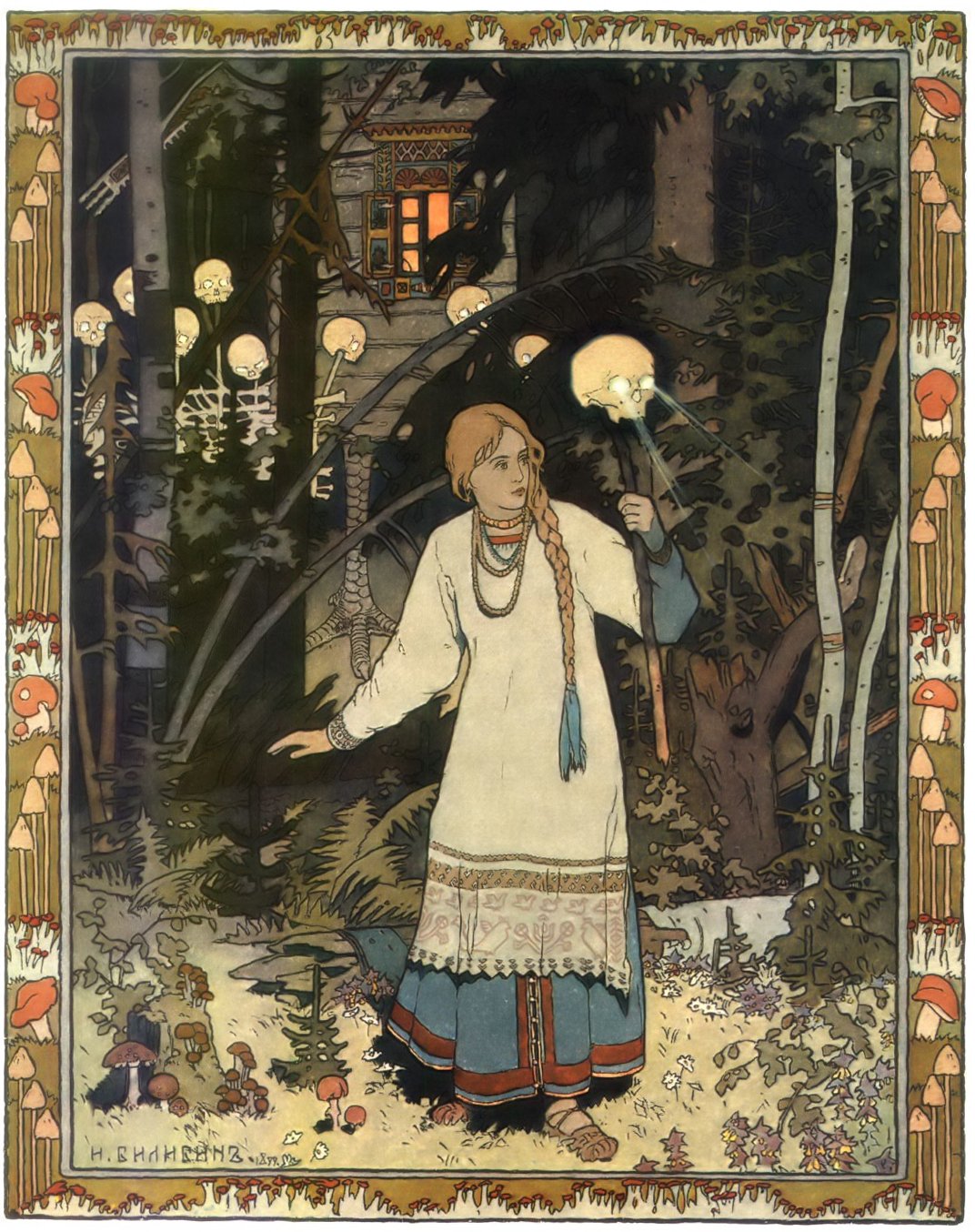

![The Year of Incline [2014] Codex 2014](/forums/smiles/campaign_tags/campaign_incline2014.png)
